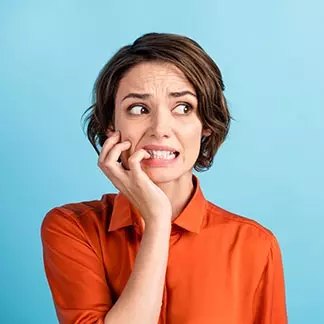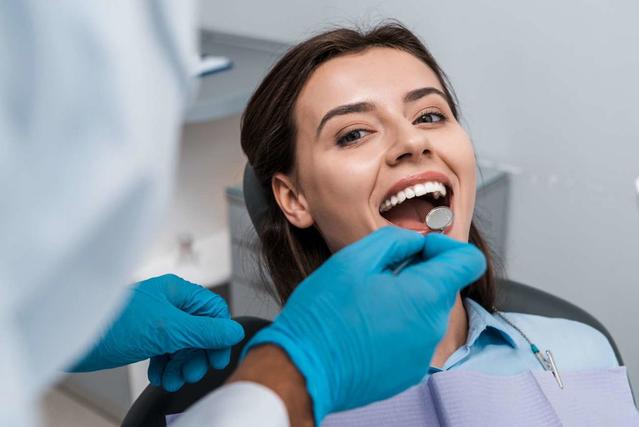If you’ve ever looked in the mirror and wondered “Why are my teeth stained?” you’re not alone.
10 Common Reasons for Stained Teeth
The discoloration can appear gradually and be overlooked until you need to look your best for a special event or the color becomes noticeably darker.
-
01
Foods
Berries, tomatoes and other highly pigmented items are foods that stain your teeth. In a way, your mother was right when she said candy, popsicles and sugary chewing gum make your teeth yellow or stained. A diet high in sugar and simple carbohydrates can welcome bacteria and discolor teeth.
-
02
Drinks
Does tea stain your teeth? Yes, colored beverages, such as red wine, coffee and black tea, can stain if they sit on your teeth throughout the day. Colas and sports drinks often are high in sugar and can do the same.
-
03
Smoking
Though not a surprise to many, you also can get stained, brown teeth from smoking. Tobacco products – from cigarettes to pipe smoke to chewing tobacco – can stain and turn your teeth darker over time.
-
04
Medication
Certain antibiotics can turn them gray-brown. Medications, such as doxycycline and tetracycline, can darken teeth for children younger than 8 years old. Some antihistamines, drugs for high blood pressure and antipsychotic meds also can stain adult teeth. Talk to your physician about potential side effects of medications you’re currently or might start taking.
-
05
Illness
A less common cause of tooth discoloration can be a disease that affects enamel or treatment of a disease, such as chemotherapy and/or radiation used to treat cancer. In this case, the discoloration is more of a brownish color. Note that, besides stained teeth, illnesses also can be the culprit behind other mouth ailments.
-
06
Mild Tooth Trauma
Teeth can change colors if they experience severe shock after a fall or accident. Although more often gray or black in adults, a traumatized tooth in a child can turn yellow or brown. If you suspect a tooth has experienced trauma, see your dentist to get it checked out.
-
07
Genetics
It also might be possible that you inherited teeth that stain more easily or have enamel that is inherently yellow. If you think you have genetically yellow teeth, you can help treat the issue by using any number of whitening strips or toothpastes to restore your bright smile.
-
08
Aging
If left untreated, stained teeth can become more obvious over the years. Teeth also can start appearing more yellow as a natural part of the aging process. As you age, your tooth enamel can become thinner, allowing yellow dentin to show through.
-
09
Excessive Fluoride
Fluorosis, an overexpose to fluoride when you’re young, can cause your teeth to appear discolored. This is often caused by overconsumption of fluoridated drinking water, juices, supplements and more as a child.
-
10
Poor Oral Hygiene
Stained teeth also can be a sign of plaque buildup or tooth decay. When you do not routinely brush, floss and rinse your mouth to remove plaque buildup and help prevent tartar buildup, this can hasten teeth discoloration.
How to Prevent & Treat Stains on Teeth
Knowing what causes teeth stains is important for both treatment and prevention. If you think certain foods are staining your teeth, avoid or limit exposure to them.

Drink beverages through a straw to reduce contact with your teeth. Don’t use tobacco, and talk to your healthcare professional about medications, illnesses or recent tooth traumas. To help further minimize stained teeth, get your teeth professionally cleaned during your biannual dentist visit. And in between, brush, floss and rinse with an anti-tartar mouthwash, such as LISTERINE® ULTRACLEAN® Tartar Control Antiseptic COOL MINT® Mouthwash to prevent tartar buildup, helping keep teeth naturally white.



